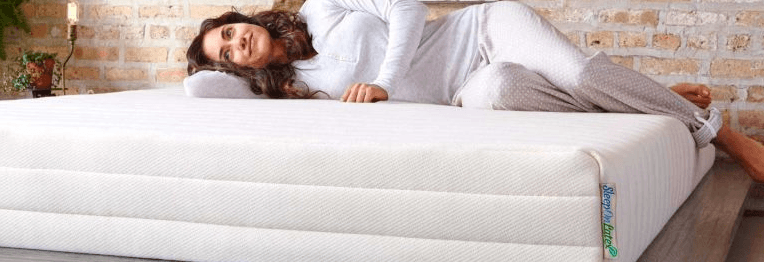Best Mattress For Arthritis And Osteoporosis
Sleeping on a Firmer Mattress is Best For Arthritis
The best mattress for Arthritis and Osteoporosis: There is no universal solution to this question because the ideal mattress for a person suffering from arthritis will be based on their specific requirements and preferences. Many people suffering from arthritis feel that a more firm mattress offers the required support and can help reduce pain. Others prefer a more supple mattress.
It’s crucial to test various mattresses and discover which ones work best for you. Certain people feel that a memory foam or hybrid mattress (a combination of innerspring and memory foam) will provide the needed comfort and support. Other options to consider are air mattresses that can be adjusted to various levels of firmness. Also, waterbeds that can be adjusted to various degree of firmness.
It is also crucial to think about whether the mattress is of good quality overall and longevity in the bed. A top-quality mattress that’s sturdy and durable enough to provide its support over time may be a great option for those with arthritis.
Always a smart idea talk to a doctor or physical therapist for specific advice on the right kind of mattress to meet your requirements.
Osteoporosis and arthritis can be extremely painful and serious medical conditions, however that does not mean you have to rest comfortably.
That’s correct. Although osteoporosis and arthritis can create pain and discomfort however, it’s nevertheless possible to get the best night’s sleep. Here are some suggestions to help you sleep better:
- Choose a mattress that is supportive as well as pillows Mattresses that are too soft or hard might not offer enough support, leading to pain and discomfort when sleeping. A mattress that is supportive as well as pillows can ease the pressure on joints and enhance the quality of sleep.
- Relaxation techniques: Before you go to going to bed, you can try relaxation techniques like meditation, deep breathing, and progressive relaxation in order to reduce stress and improve sleep.
- Regular exercise: Regular exercise can ease discomfort and improve the quality of sleep. It is important to speak with the healthcare professional regarding the right exercise program.
- Beware of alcohol and caffeine before going to the bedtime. Alcohol and caffeine can interfere with sleep, so it is best not to consume these substances during the time before the time of bed.
- Think about making use of a heating pad or hot water bottle to apply the heat to joints that are in pain will help ease discomfort and improve the quality of sleep.
It’s also essential to speak to your doctor regarding any discomfort or pain that may be affecting your sleep. They will be able to provide specific suggestions and treatment options to ease the pain and improve the quality of your sleep.
Make use of a supportive mattress and pillows to treat osteoporosis and arthritis.
It’s true that having an appropriate mattress and pillows are beneficial for those who suffer from arthritis or osteoporosis. A mattress that is supportive and pillows can ease the pressure on joints and enhance the quality of sleep.
For people suffering from arthritis mattresses that are too soft or difficult can not provide enough support and may cause discomfort and pain while sleeping. Hybrid or memory foam mattress (a combination of innerspring and memory foam) could be a good choice because they are made to conform to the body and provide relief from pressure.
For those suffering from osteoporosis, it’s essential to pick the right mattress to provide adequate support for the spine, as well as being comfortable. A mattress that’s firm or medium-firm is a great choice.
It is also essential to select cushions that offer the needed support for the head and neck. The memory foam and contour pillows may be great options for those suffering from osteoporosis.
Try relaxation techniques for Arthritis and osteoporosis
Relaxation techniques can be an effective approach to ease discomfort and improve sleep for those suffering from osteoporosis and arthritis. Relaxation techniques like deep breathing, meditation as well as progressive muscular relaxation could aid in reducing stress and promoting sleep.
Here are some ways to relax that you could attempt:
The deep breathing technique:Sit comfortably in a peaceful area and concentrate on your breathing. Inhale slowly through your nose, and exhale with your mouth. When you breathe attempt to relax any tension you feel in your body.
Deep Breathing for Osteoporosis and arthritis
Deep breathing is an effective relaxation method for people suffering from arthritis or osteoporosis. The Deep breathing consists of focusing on breathing and breathing slowly, in a controlled manner into the nostril, and out through the mouth.
To take deep breaths:
- Find a comfortable sitting or lying posture.
- Shut your eyes, and concentrate on your breathing.
- Inhale slowly through your nose, then exhale through your mouth.
- When you breathe and breathe, try to release any tension that may be affecting your body.
- Keep your attention on your breath, allowing your mind to relax of all thoughts that are distracting you.
Deep breathing can ease stress and increase relaxation, which is beneficial in reducing discomfort and improving the quality of your sleep. It’s a straightforward technique that is done at any time and anywhere and doesn’t require specific equipment.
meditation:Find an area of peace where you can relax or lay down in a comfortable position. Shut your eyes, and concentrate upon your breathing or the mantra. Make an effort to release any thoughts that are distracting you and focus on the present.
Meditation For Arthritis and Osteoporosis
Meditation is a beneficial way to relax for people suffering from osteoporosis and arthritis. The practice of meditation is to focus the mind on an thing, thought or task to improve focus and awareness.
For meditation practice:
- Find a peaceful spot in which you can sit or lay down in a comfortable position.
- Take a deep breath and concentrate upon your breathing or an affirmation.
- Take the time to let go of any thoughts that are distracting you and concentrate on the present moment.
- If your mind is wandering you, gently bring your attention towards your breath, or your mantra.
Meditation can reduce stress and improve relaxation, which is helpful in managing discomfort and enhancing sleep quality. It’s an easy method that can be performed at any time any time, anyplace, and doesn’t require any specific equipment.
There are a variety of different kinds of meditation and it’s recommended to experiment with some and discover what is most effective for you.
Progressional muscle relaxation
Beginning by putting your feet on the ground, tighten and then relax every muscle group within your body, working towards high above your head. When you tighten every muscle, keep it in place for a few seconds then let the tension go.
Relaxation of the muscles in a progressive manner Osteoporosis and Arthritis
Progressive muscle relaxation can be described as a relaxing technique that involves tensing, and then relaxing each muscle throughout the body. It can ease stress and improve relaxation, which is beneficial in managing discomfort and improving sleep quality for those with osteoporosis or arthritis.
For practicing the progressive relaxation of muscles:
- Find a comfortable sitting or lying posture.
- Start with your feet and tighten the muscles of one area (e.g. the feet) for a short period of time then let go of the tension.
- Then, move on towards the following muscle group (e.g. the calves) and repeat the exercise.
- Continue working on your body, stretching and releasing each muscle group.
- When you tighten each muscle group, concentrate on the feeling of tension and release.
- Once you’ve tightened and relaxed all muscles Take several deep breaths and let your body relax.
Progressive muscle relaxation is beneficial to incorporate into your bedtime routine to prepare the body and mind for a peaceful sleep.
It’s an excellent idea to develop a bedtime routine that incorporates relaxation techniques to prepare your body and mind to sleep.
Regularly exercise to prevent arthritis and osteoporosis
Exercise can be a crucial element in controlling the pain and improving quality of sleep for those suffering from osteoporosis or arthritis. Regular exercise can ease discomfort and improve sleep quality and boost overall physical functioning.
For those suffering from arthritis exercising with low-impact, such as swimming, walking or cycling could be beneficial. It is important to speak with your healthcare professional or physical therapist to determine the right exercise program.
For people suffering from osteoporosis exercise that is weight bearing and resistance-based can improve bone density and decrease the chance of fractures. It is important to speak with an expert in healthcare or a physical therapist about the right exercise regimen and to follow the correct form and technique to limit the risk of injuries.
It’s crucial to begin slow then gradually ramp up the duration and intensity of the exercise as you feel comfortable. It’s an excellent idea to warm up prior exercising and cool down following.
Avoid drinking alcohol and caffeine before going to bedtime for osteoporosis and arthritis Patient
Refraining from drinking alcohol and caffeine before going to sleeping can help those suffering from osteoporosis and arthritis since these drinks can disrupt sleep and cause discomfort and pain.
Caffeine can be a stimulant which may disrupt sleeping by stimulating central nerves, and increasing alertness. It’s in tea, coffee chocolate, tea, and other drugs. It is recommended to stay clear of the caffeine at least 6 hours prior to the time you go to bed.
It is known as a depressant which helps people to sleep better, however it also can disrupt sleep at night. Alcohol can affect sleeping quality and raise the likelihood of suffering from sleep apnea. It is best not to consume alcohol for at the least four hours prior to going to bed.
It is essential to get quality sleep to reduce discomfort and enhance overall wellness. Implementing healthy sleeping habits, like maintaining a consistent schedule for bedtime and establishing a relaxing sleeping environment, can be beneficial for those suffering from osteoporosis and arthritis.
Think about making use of a heating pad or hot water bottle for arthritis and osteoporosis
Utilizing a warming pad or hot water bottle could be an effective method to ease pain and increase the quality of sleep for those suffering from osteoporosis and arthritis. The application of heat to joints that are painful can reduce discomfort and improve the quality of sleep.
There are many kinds of heating pads to choose from which include microwaveable, electric and chemical. It is essential to follow the directions of the manufacturer on how to use them and to exercise care when applying heat to the body.
The hot bottle may also be a great alternative for applying warmth to joints that are painful. It’s crucial for you to refill the bottle with warm, but not hot, water, and then wrap the bottle in a towel prior to applying it to the skin in order to keep away burns.
It is important to exercise caution when applying heat to your body and to adhere to any advice from a medical professional. It’s recommended to stay clear of using a heat pads or hot water bottles for long period of time because the excessive use could cause burns or skin irritation.







